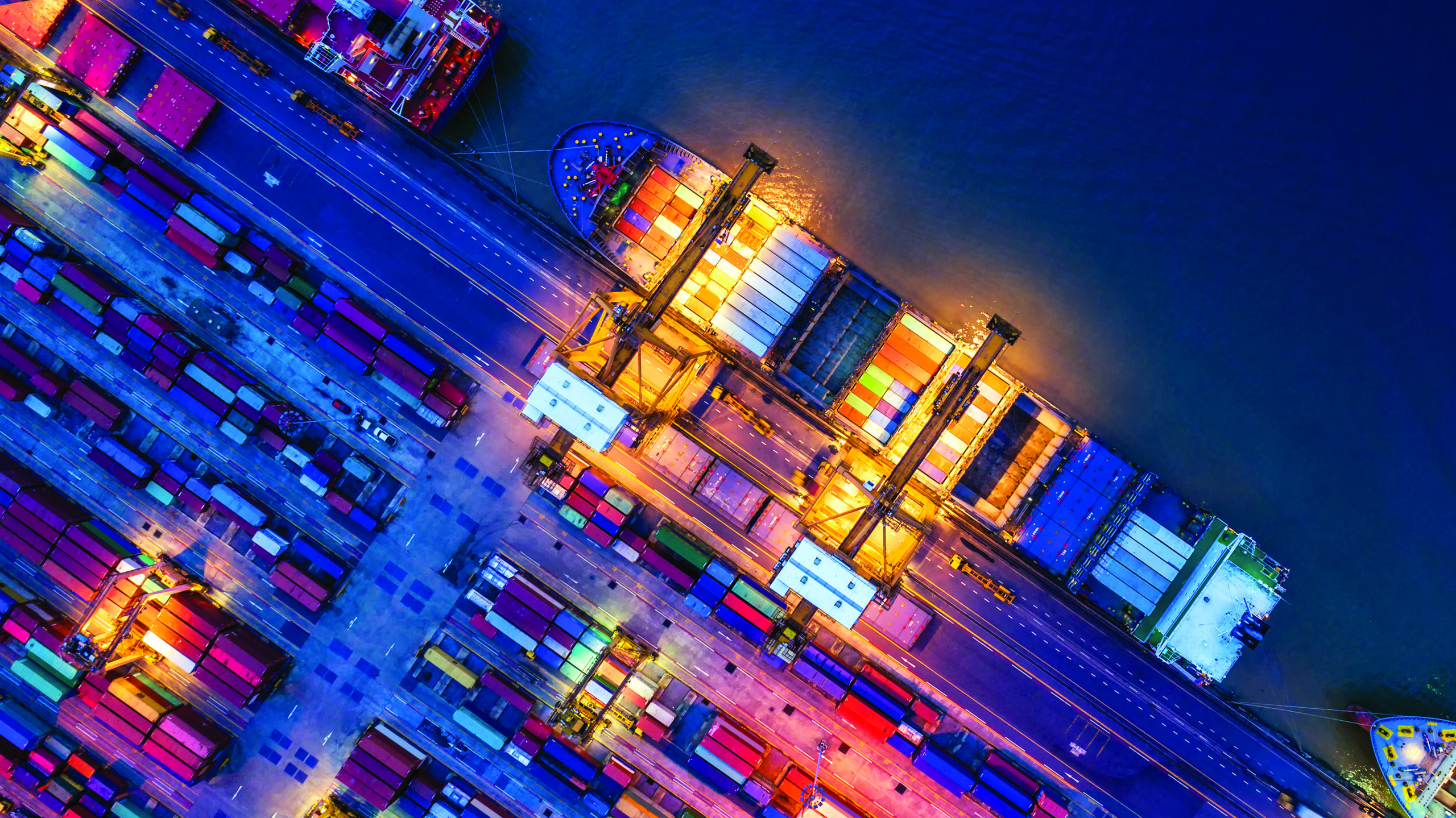
Over the last couple of years, we have experienced our global supply chains being held to ransom by major disruptions, including the pandemic, natural disasters, and geo/political conflicts, that seem to be only increasing their impact.
These disruptions are not dissipating and are becoming the new normal. COVID-19 is not our first pandemic and nor will it be our last.
Weather patterns across the globe have changed dramatically and are constantly moving. Not only that, but we are also facing major political issues, causing countries to have sanctions thrusted upon them and trade agreements threatened.
These disruptions are not targeted at a singular region. Let’s face it, our supply chain/procurement managers are probably in one of the toughest roles in a business today.
One of the big challenges for supply chain now is on the water, with hundreds of cargo ships at a time waiting to enter some of the world’s largest ports.
We are also seeing a lot of the smaller ports becoming impacted, although we do anticipate seeing this clearing soon. Once containers land, the impact keeps moving downstream where we are seeing logistics and the warehouse chain start to fail.
A good example of this is in Australia. We are already feeling the squeeze as we saw containers sitting in detention on the docks in late 2021 and in early 2022 due to warehouses being at capacity.
Additionally, they have also been heavily impacted by labour shortages, disrupting the cycle of movement in and out of the warehouse and severely delaying the last mile delivery.
I have seen a lot of mistakes due to lack of planning and communication throughout the supply chain, with reactive decision making.
The supply chain domino effect
So, how did we get into this mess when the pandemic and all the disruptions have been around for a few years? There are many reasons why, but let’s focus on two main procurement models so we can learn from this.

Many businesses have been working with the JIT (Just in Time) Model mainly due to market competitiveness. Relying on vendors is based on the end inventory model, not how fast the inventory moves its way through. This model works if everything goes to plan.
The risks occur when it doesn’t go to plan such as what we are seeing now, with all the disruptions across the entire supply chain, from components, manufacturing, on the water and now on land.
These disruptions cost you across all touchpoints in turn increase COGS, potentially outweighing the profits you have made or could have made on those products.
This model not only poses a risk to your customers if you cannot deliver on time, but also the loss of revenue and your reputation.
The other model being used is you or your vendor/manufacture hold buffer stock in case of a disruption. This can potentially create the problem of stock stagnate between these disruptions.
The risk here is firstly a financial – the cost of storage, the cost to avoiding SLOBS and/or repurposing your stock, potentially writing of stock, all these together you have possibly already priced yourself out of the market. This is where we have seen businesses shut due to stock issues.
Think of supply chain like a game of dominoes: one piece that stumbles or falls will either impact the upstream or downstream of your supply chain – impacting the entire game.
Shipping costs alone have increased more than tenfold, which is scary when you think that globally 90 per cent of goods are shipped by sea.
These costs have been absorbed in the past, if it’s only short term, but not in today’s environment. We are seeing around 25 per cent+ (depending on the industry) being passed onto the consumer, and it won’t stop there.
The demand chain is becoming impossible to plan. If you’re analysing data from the past five years, or even two years, you will see a bullwhip effect, significant peaks and troughs. So, how do you set your minimum and maximum levels of stock holdings when you don’t know what you don’t know?
That is why these two models are not sustainable for the future and now a lot of businesses are starting to rethink their supply chain. Let’s look at how businesses are starting to rethink their supply chain.
Collaboration and innovation
Internationally, many companies are taking new approaches, implementing strategies such as regionalisation and nearshoring.
Regionalisation is the spreading of factories – moving them closer to the consumer by spreading their manufacturing footprint over various regions. The idea is to minimise risk, this means if a factory must shut down, it only impacts sales in close locations within the region.
A more popular strategy, especially in the apparel industry, is nearshoring – moving the manufacturing closer to the country where the goods are sold and distributed.
An example of this is Italian clothing company, Benetton. It was suffering major shortages, so the fashion brand decided to increase manufacturing in Turkey, Croatia, Serbia, Ukraine, Tunisia, and Egypt – closer to its core customers. The company is now planning to cut manufacturing in China down to half by the end of 2022 – 2023.
In Australia, we need to think bigger and louder. There are some companies that have already started bringing manufacturing back, also known as ‘reshoring’. This is expensive and also not without risks. There are many impacts to your bottom line, which could derive from this movement.
With this in mind, we need to think outside the square, dig deep and come up with other solutions.
If you are a small to medium sized business the three strategies above will not be in your reach unless you collaborate with others.
It’s important we understand the severity of the disruption impacts in Australia. The Australian Bureau of Statistics (ABS) recently conducted surveys to understand the supply chain impact to businesses.
According to the results, during April 2021 – Jan 2022, 47 per cent of businesses said they suffered due to supply chain issues. In February, the number of businesses that suffered due to supply chain issues decreased to 37 per cent.
However, 15-22 per cent of these businesses were/are severally impacted by labour and revenue loss, due to supply chain issues. According to the ABS, it has been medium sized business most impacted.

Business owners need to start thinking holistically and taking a more collaborative approach. Collaborating within your supply chain web may lead to solutions that can work with very little risk.
Where to from here?
So, where to start? The first step is to map out your current supply chain web. Find out where your raw materials are sourced and go downstream from there.
The key is to understand every touchpoint from the first mile to the last. By doing this you will identify where your risks lie within the current state supply chain.
Once you have transparency of your supply chain, you can develop your future state supply chain map.
When we talk about transparency, we are talking about identifying businesses/industries that utilise and work within your supply chain web, and whom you should start collaborating and build relationships with by leveraging of each other.
These actions are quite complicated but will provide you with a lot of insight, allowing you to develop strategies that will allow all involved to take control and pivot quickly along the chain to avoid as much disruption as possible.
This type of complex planning requires time and investment but will pay off. It is what is required to have a sustainable future, enabling you to plan and react quickly so your businesses supply chain is more fluid. It is up to you to understand and manage this.
By Susan Crane, director of Crane Consulting on behalf of Tennant Australia and New Zealand.
This article first appeared in the May/June issue of INCLEAN magazine.
Comment below to have your say on this story.
If you have a news story or tip-off, get in touch at info@incleanmag.com.au
Sign up to INCLEAN’s newsletter.





